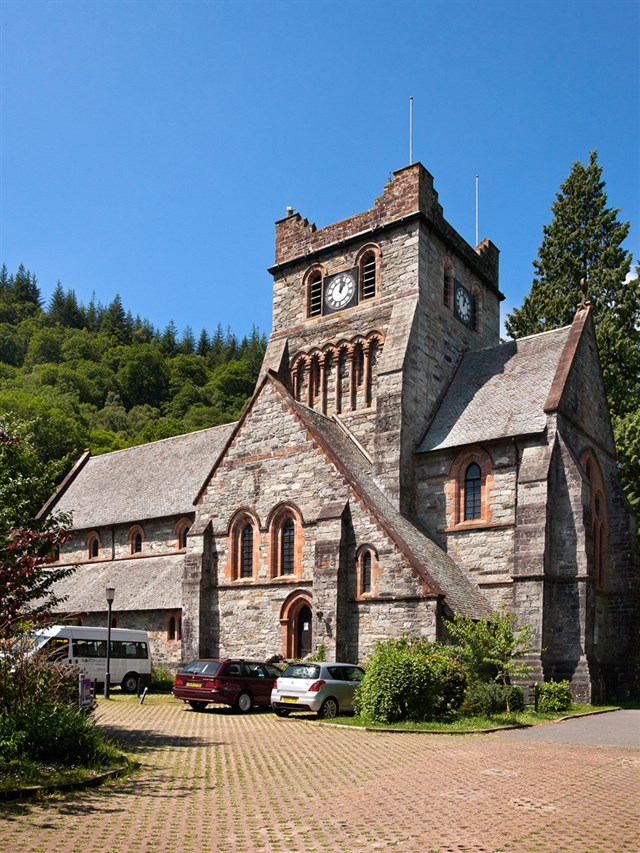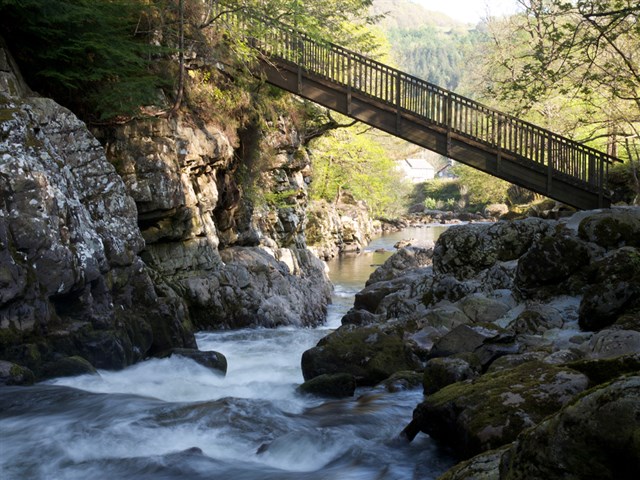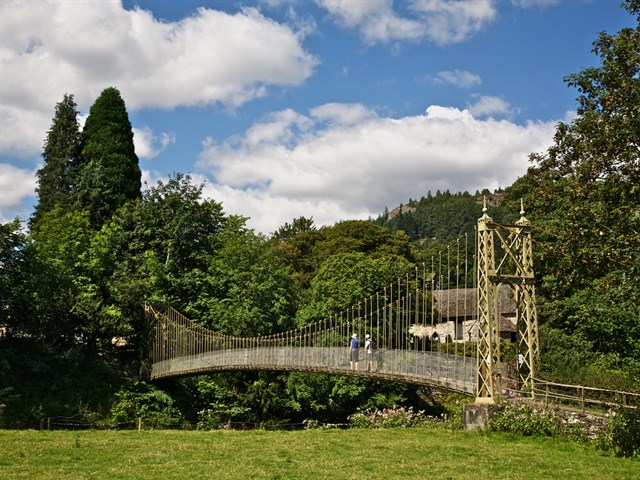Darllenwch yn Gymraeg
A step into the past…
Betws-y-Coed translated means “prayerhouse-in-the-woods” and is thought to refer to 14th Century St. Michael’s Church where the yew trees are around five centuries old. It served as the village’s main church until 1873 as a growing population resulted in the building of the much larger St. Mary’s Church on grounds belonging to Gwydir Castle.
St. Mary’s and the railway station (built in 1869) were designed by the same architect, Owen Gethin Jones. It was the opening of roads and railways that attracted vast numbers of visitors to the area, particularly artists, poets and writers who were drawn to the clean air and wonderful scenery. As a result, Betws-y-Coed became home to Britain’s first artists’ colony.
During this Victorian era, the village grew as a tourist destination and accommodation flourished. Hotels arranged excursions via their own horse-drawn transport and in the 1930s dedicated excursion steam trains took factory workers from Lancashire into Betws–y-Coed for a day out. The Trefriw Spa was opened to the general public and became popular with visitors in its own right. Paddle steamers docked at the Trefriw quay side until the outbreak of the 2nd World War in 1939.
One of many attractions of Betws-y-Coed and surrounding areas are the beautiful and historical bridges. The Pont-y-Pair Bridge (“Bridge of the Cauldron”) was built before 1475 and is the oldest existing bridge in the village. However, the romantic heritage site of The Roman Bridge, near the Penmachno Falls, dates from 200 AD. The Waterloo Bridge built by Thomas Telford in 1815, carries the A5 connecting London with Dublin. Decorated with the Leek, Rose, Shamrock and Thistle it commemorates the battle of Waterloo. The Sappers Suspension Bridge across the River Conwy near St. Michael’s Church dates from 1930. It replaced an earlier bridge from 1917 built as an alternative for The Stepping Stones which can still be seen from the golf course. The Miners’ Bridge at the north of the village is where the Romans most likely crossed the River Llugwy. It was later used by the quarrymen to reach the mines of the Gwydyr forest.
Mining was widespread in the area in the late 19th and early 20th Centuries; Betws-y-Coed is built almost entirely of stone quarried from Hafod Las and Rhiwddolion slate quarries. Hafod Las quarry bordered the western part of the village, behind what is now the Pentre Du housing estate. In its heyday thousands of tons of slate and building stones were produced, until its decommission in the late 1920s. Metal mines producing lead, zinc and copper were located in the Gwydyr Forest and around Llyn Parc (Park Lake.) One such mine was Aberllyn where 2500 tons of zinc was extracted in the late 18th Century. It closed in 1921, leaving the shafts, railways and buildings to be retaken by nature.
The Gwydyr Forest is named after the ancient estate once owed by the Wynn Family of Gwydir Castle. In 1937, it became a National Forest Park and in 1921 it was planted with conifers for commercial use. One of its beautiful upland lakes is Llyn Elsi (Elsie Lake); a natural lake extended to a reservoir in 1908 by building a dam. This lake supplies water for Betws-y-Coed and is a popular beauty spot for walking, photography, bird watching and cycling.
View of our photo gallery
-
 St Mary's Church in the village centre
St Mary's Church in the village centre
-
 The Miner's Bridge
The Miner's Bridge
-
 The Sappers Suspension Bridge of 1930
The Sappers Suspension Bridge of 1930